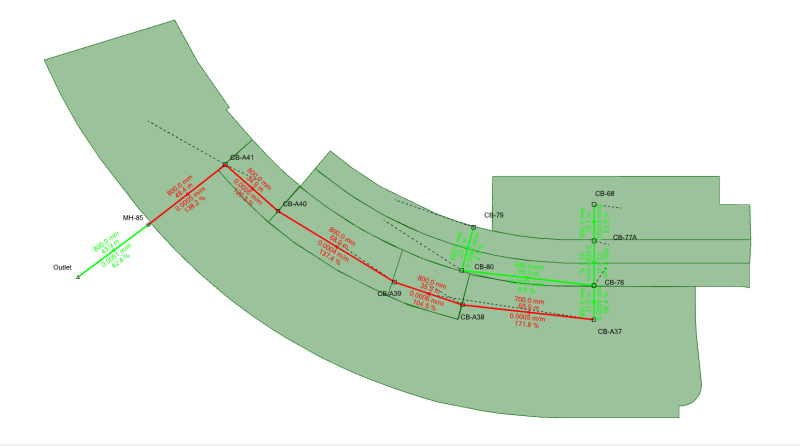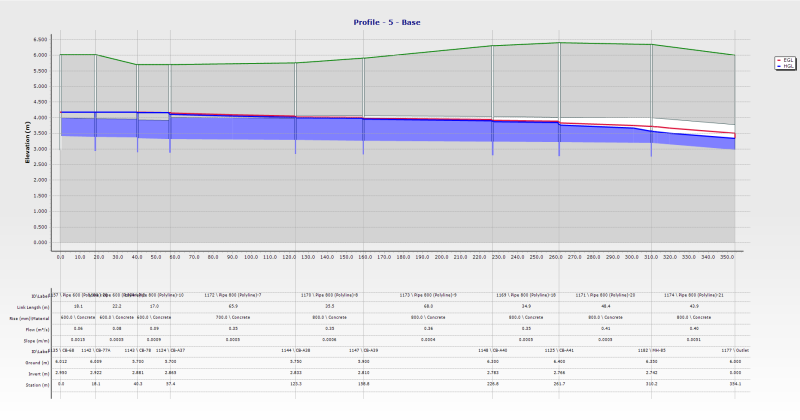First, please do realize that the flows themselves are borked for either method. Let's take a step back.
StormCAD and other softwares typically use the modified rational method to develop their catchment flows. What does that mean? It means the flow in the first pipe is based on the Tc of the first catchment, lets say 5 minutes. So it's a rational Q=CIA flow with an I pulled off the IDF curve for a 5 minute storm. What about the 2nd pipe? Well, now things get tricky.
When StormCAD does the 2nd inlet, it uses the Tc you unput for the inlet catchment, perhaps also 5 minutes, to do its pavement hydraulics calculations (gutter spread). But then when it calculates the flow rate in the pipe, it throws out the two incoming flow rates and recalculates a new Q=CIA based on the longest travel time to the pipe. So that could be the Tc of the second catchment, or as is more often the case, the Tc of the first catchment
plus the travel time in the pipe. So you could have the Tc of both catchments be 5 minutes, and the travel time down the pipe between inlet 1 and 2 is a minute, and the flow in pipe 2 would be based on Q=CIA, with the I pulled off the IDF curve for *six* minutes, not five. And the further you go down your network, the longer the Tc will be that StormCAD uses to calc the pipes.
So what does that mean, really?
It means that each pipe is being designed for a different intensity storm event. The gradually varied flow profile you see in the output is literally impossible to reproduce in the field. Even if you had a tiny cloud raining a different intensity of rain into each inlet you couldn't match the GVF profile. Even if you had it do everything with straight Manning's, you still couldn't match it, because of the flow assumptions. StormCAD is applying the principles of gradually varied flow to discharge profile that cannot exist in that system.
What this really means, is we have entered a world where you really don't need all this information to do the things we do. Pipes are sized for design storms that are way, way higher than ordinary flow conditions, and that overdesign is going to compensate for any nuances in the calculation method, provided your calculation method isn't prone to significant actual errors in your assumptions.
tl;dr, don't lose any sleep over it.
That said,
1) if StormCAD is showing a HGL below the crown of the pipe for a Q that's triple the pipe's capacity, check everything. That seems very fishy,
2) in a general sense, please don't design storm sewers for pressure flow conditions. It's a very bad engineering practice that can lead to sinkholes, piping, and other sorts of failures
Hydrology, Drainage Analysis, Flood Studies, and Complex Stormwater Litigation for Atlanta and the South East -


